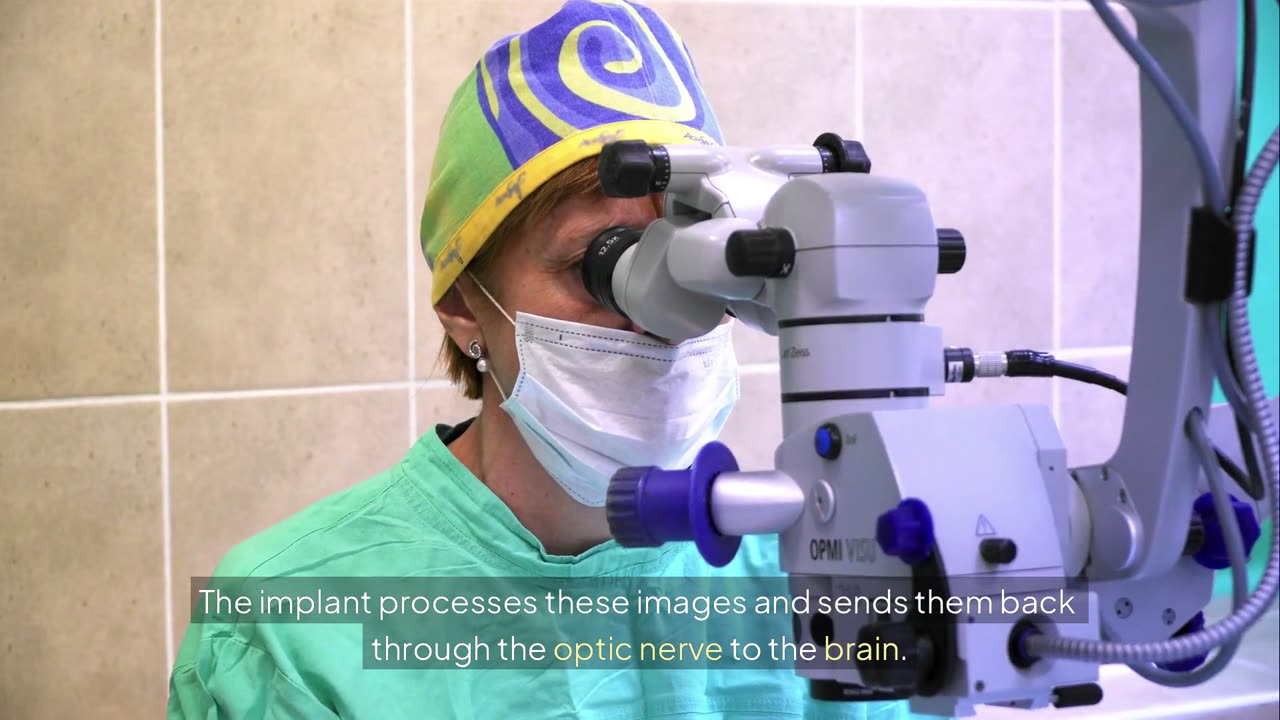Premium Only Content

magine being unable to read for decades. For many, that was the heartbreaking reality
Imagine being unable to read for decades. For many, that was the heartbreaking reality. But a revolutionary new implant is changing lives. Meet Sheila Irvine, a 70-year-old woman who is registered blind. After receiving the Prima implant at Moorfields Eye Hospital in London, she can read again. Sheila describes the experience as "out of this world." This groundbreaking technology targets geographic atrophy, a severe form of dry age-related macular degeneration. This condition affects over 250,000 people in the UK alone, leading to blurred or distorted vision. So, how does it work? The Prima implant consists of a tiny microchip inserted under the retina. Patients wear glasses equipped with a video camera. This camera captures video images and sends them as an infrared beam to the implant. The implant processes these images and sends them back through the optic nerve to the brain. After some training, patients can interpret these images, regaining some functional vision. In an international trial involving 38 patients, 27 reported they could read with their central vision after receiving the implant. Sheila, who had lost her ability to read for over 30 years, can now read letters and enjoy crosswords. While the procedure requires concentration, Sheila and others like her find joy in newfound independence. "I am able to read my post, books, and do Sudokus," she shares. However, the Prima implant is still in clinical trials and not yet widely available. Medical professionals like Dr. Peter Bloomfield express optimism about future accessibility, particularly through NHS programs. This technology not only offers hope for those with geographic atrophy but also opens doors for advancements for other eye conditions. As Sheila puts it, It is amazing. I am one happy bunny. For more updates on this exciting technology, stay tuned!
-
 LIVE
LIVE
BonginoReport
2 hours agoIllegal Alien Kills 3 in Pile Up & You Can Thank Democrats - Hayley Caronia (Ep.162)
2,705 watching -
 42:58
42:58
TheCrucible
2 hours agoThe Extravaganza! EP: 59 with Guest Co-Host: Rob Noerr (10/23/25)
44.2K1 -
 DVR
DVR
Kim Iversen
3 hours agoTrump Threatens To End ALL Support For Israel
35.9K53 -
 15:38
15:38
Cash Jordan
3 hours agoPortland Zombies EMPTY 52 Stores… Mayor FREAKS as “Sanctuary” SELF DESTRUCTS
11.5K21 -
 1:56:46
1:56:46
Redacted News
3 hours agoHIGH ALERT! Trump pushes "land war" in Venezuela, and Russia goes nuclear | Redacted News Live
114K68 -
 16:47
16:47
Robbi On The Record
2 hours ago $0.92 earnedThe Day Seeing Stopped Meaning Believing | Sora, AI and the Uncanny Valley
5.78K3 -
 9:54
9:54
Dr. Nick Zyrowski
1 day agoDoctors Got It Wrong! What High Cholesterol REALLY Means...
8.02K3 -
 LIVE
LIVE
Tundra Tactical
2 hours agoProfessional Gun Nerd Plays Battlefield 6
128 watching -
 1:06:06
1:06:06
vivafrei
4 hours agoAnother Illegal Alien Kills Americans! Candace Owens Promises to Violate Kirk Gag Order? & MORE!
120K31 -
 1:42:30
1:42:30
The Quartering
5 hours agoTrump Blamed For NBA Rigging Scandal, Major X Change Renders Site Useless, Church Nonsense
142K46